Otabi Matsuri Festival
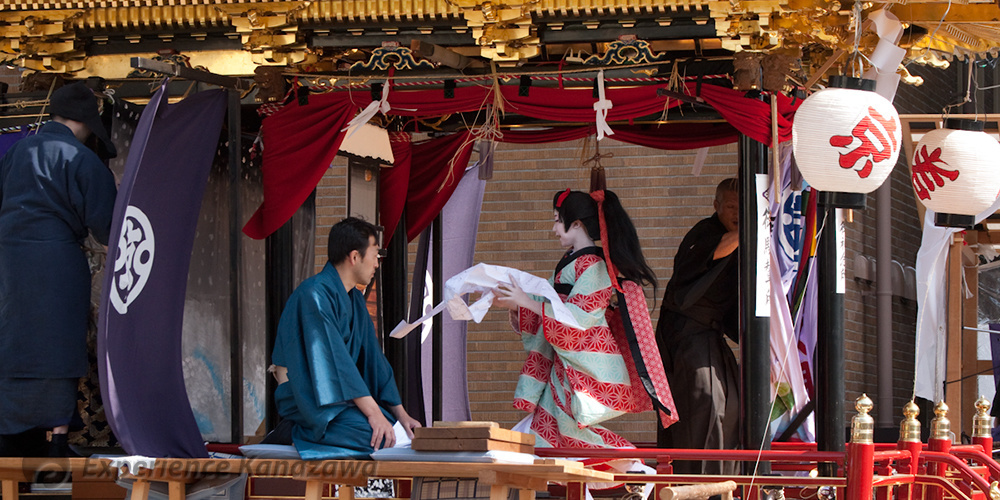
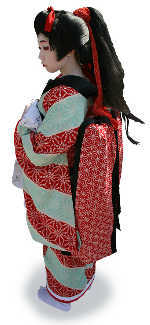 Fabulous Kids' Kabuki on the floats outside!
Fabulous Kids' Kabuki on the floats outside!

Komatsu city is well-know for the popular Kabuki play "Kanjin-Cho", based on the Noh play "Ataka". It's a story of a prince of tragedy, Yoshitsune Minamoto, and the warrior monk who served him. Yoshitsune is the step brother of the founder of the Kamakura Shogunate (1185-1333), and was accused of treason. They were just about to go through the Ataka-no-Seki barrier dressed like mountain ascetic hermits, to escape from the military dictator, then...
The Ataka-no-Seki in those plays truly existed by the ocean in the city. It's no wonder that Komatsu people love Kabuki. The Otabi Matsuri festival originated from a prayer to God for peace in 1651. Kids' Kabuki has a history of 240 years. Through in the past it was only open to boys to perform the fabulous play! Ryusuke-Cho, Nishi-Cho, Kyo-Machi, Naka-Machi, Tera-Machi, Yohkaichi-Machi, Daimonji-Cho, and Zaimoku-Cho have floats. Two of the eight districts perform every year. This year it was Kyo-Machi and Daimonji-Cho's turn, and I watched "Otoko-no-Hanamichi" in Kyo-Machi.
Coco SHIZUO, Artex Inc.; Updated June 1, 2018
Fabulous Kids' Kabuki on the floats outside!
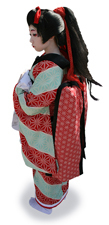
The Ataka-no-Seki in those plays truly existed by the ocean in the city. It's no wonder that Komatsu people love Kabuki. The Otabi Matsuri festival originated from a prayer to God for peace in 1651. Kids' Kabuki has a history of 240 years. Through in the past it was only open to boys to perform the fabulous play! Ryusuke-Cho, Nishi-Cho, Kyo-Machi, Naka-Machi, Tera-Machi, Yohkaichi-Machi, Daimonji-Cho, and Zaimoku-Cho have floats. Two of the eight districts perform every year. This year it was Kyo-Machi and Daimonji-Cho's turn, and I watched "Otoko-no-Hanamichi" in Kyo-Machi.
Coco SHIZUO, Artex Inc.; Updated June 1, 2018
Date: Friday, Saturday, Sunday and Monday in mid-May
Place: Ryusuke-Cho district, Nishi-Cho district, Kyo-Machi District, Naka-Machi district, Tera-Machi district, Yohkaichi-Machi district, Daimonji-Cho district and Zaimoku-Cho district / Moto-ori Hiyoshi-jinja Shrine (1, Moto-ori-Machi, Komatsu City) / Uhashi-Jinja Shrine (i-233, Hamada-Machi, Komatsu City)
Hikiyama Hiki-Zoroe: All 8 floats gather in the center of downtown Saturday night
How to get to Komatsu City: Take a JR "Hokuriku-Honsen Line" train, get off at "Komatsu Station"!
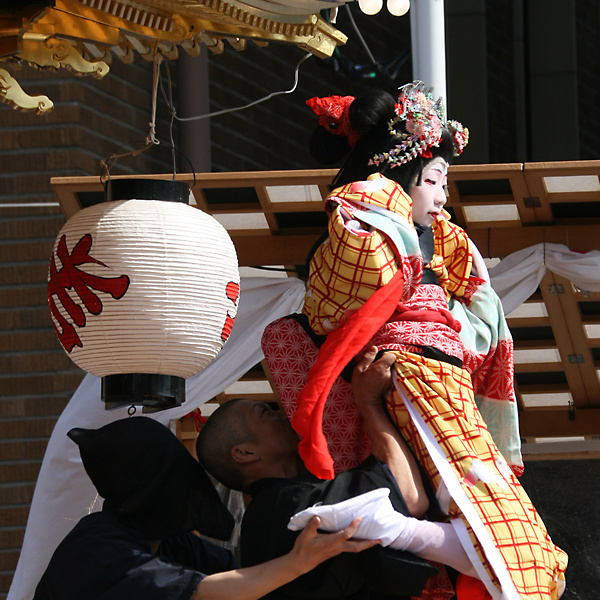
"Otoko-no-Hanamichi" is the story of friendship and obligations between two men!
A star actor from the old Osaka, who plays female roles, is on his way to old Tokyo with his companions. The troupe believes in their success with the star actor, Utaemon. He was, however, told by doctor that he would become blind in three months. Desperately trying to hide the news from his companions, desperation and sadness are all that are in his mind. One day, he met Genseki at an inn, a man who studied medicine in Nagasaki. Dr Genseki found out that Utaemon was almost blind and offered to cure his eyes. Although the doctor was successful, he refused to take any money from Utaemon.
"Become the best actor in Edo (old Tokyo)! I'll do my best to be a great doctor. When I need you, then you can return the favor!"
Some years later, Dr Genseki was visiting the lord Kashiwabara at Ryotei (excellent restaurant) Ebisu-Ya in Edo, traveling with the herb doctor, Doh-An. They had been enjoying Japanese rice wine together, and Doh-An showed his dancing abilities. The lord Kashiwabara asked Dr Genseki to dance for him as well. But he humbly refused, saying only "I can cure people but, dancing is something completely different." Those who have power hardly want to negociate with those lower than them, you know?

The lord gives him an order, "Call the best actor in Edo, Utaemon instead, or I will kill you!" Meanwhile, Utaemon was playing a tragic love story "Yaoya-Oshichi" on a stage which is well-known for Bunraku. -Look at him! He is just like a puppet being manipulated by a puppeteer!
Between scenes, he received a letter from Dr Genseki and learned of his crisis. The audience is waiting for him. So, what do you think Utaemon will do?

Kids play brilliantly on the float! Also, it was so adorable to see their conversations backstage!
Before the play started, I went to the back of the float to see the kids. They were beautifully made-up and waiting for their performance on the chairs. I heard about a photo competition for next year’s poster. No wonder why lots of older people with fancy cameras couldn’t stop shooting pictures of the photogenic objects. To my surprise, the little Kabuki performers were all girls! It's actually a Girls' Kabuki! Wow! I got a copy of the Kyo-Machi's brochure and read the comments in it after the play. They talk so adorably, but also think like a professional actresses! I could understand that they learned how to perform and express each role’s feeling, even thoug they are all under 12, some are just 9-years-old. They are geniuses!
Only two of the eight districts show their performances every year, which means each district plays once four years. Kids also know it and understand their responsibilities. But they trust grownups who support them, and seemed not to be nervous at all.

Their parents also might played before, or grand fathers long time ago? People are the heritage in Komatsu!
Otabi Maturi is actually a spring festival of both the Uhashi-Jinja and Moto-ori Hiyoshi-Jinja shrines!
Otabi literally means “a god's tour”. The portable shrine makes a tour around downtown Komatsu city for the festival, so that's the origin of the name. People clean their houses, decorating the entrances with their crested curtains and lanterns in order to welcome the god. Before watching the Kabuki play, I walked around and ran into kids' band, walking into a shop for a lion dance.
A big boy beats a drum, little kids play flutes, and the lion shows a dance to drive evil away. I was impressed to see so many children in the districts. Has the birth rate in Japan increased recently?
The districts are lovely, with many old townhouses. It's like a museum of old Japanese architecture, yet people still live there! For the festival, people in formal Kimono take care of the kids. It really amazed me! If you go watch the Kids' kabuki, I recommend that you take a stroll within the districts as well. On the main street along the canal, they open festival stalls throughout the day. Have some snacks before the show!

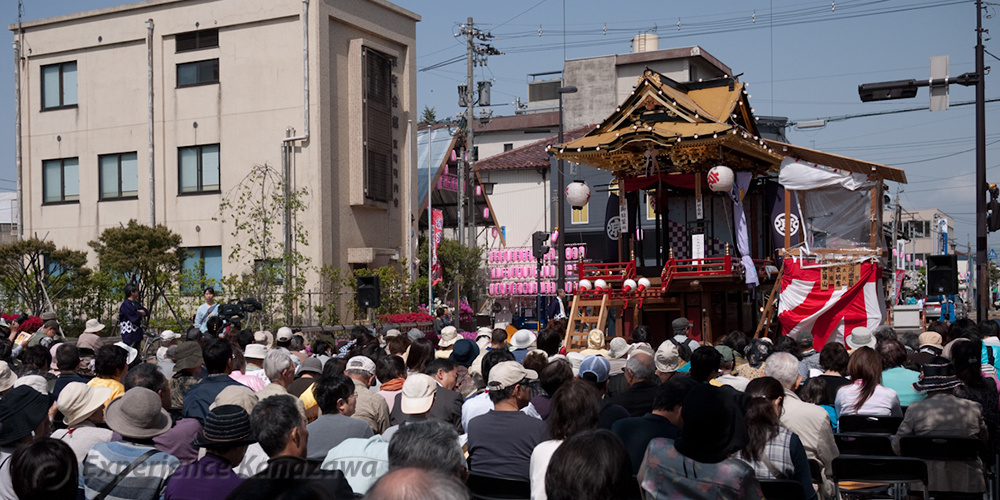
Kanazawa Area
Kenrokuenn Garden
Following Matsuo Bashô’s steps in Ishikawa - 1/6 [Introduction]
Following Matsuo Bashô’s steps in Ishikawa - 2/6 [Kanazawa]
Noto Area
Mitsukejima Island
Kaga Area
Following Matsuo Bashô’s steps in Ishikawa - 3/6 [Komatsu City]
Following Matsuo Bashô’s steps in Ishikawa - 4/6 [Natadera Temple]
Following Matsuo Bashô’s steps in Ishikawa - 5/6 [Yamanaka Onsen Town]
Following Matsuo Bashô’s steps in Ishikawa - 6/6 [Daishoji District]
Rosanjin in Yamashiro Onsen Town
Stroll Kanazawa in Rental Kimono - 1/2 [Kimono Rental]
Stroll Kanazawa in Rental Kimono - 2/2 [Kimono Stroll]
January
Enyukai: Geisha Party
February
Setsubun-Sai Festival
AUGUST
Issaki Hoh-Toh Matsuri
November
Enyukai: Geisha Party
